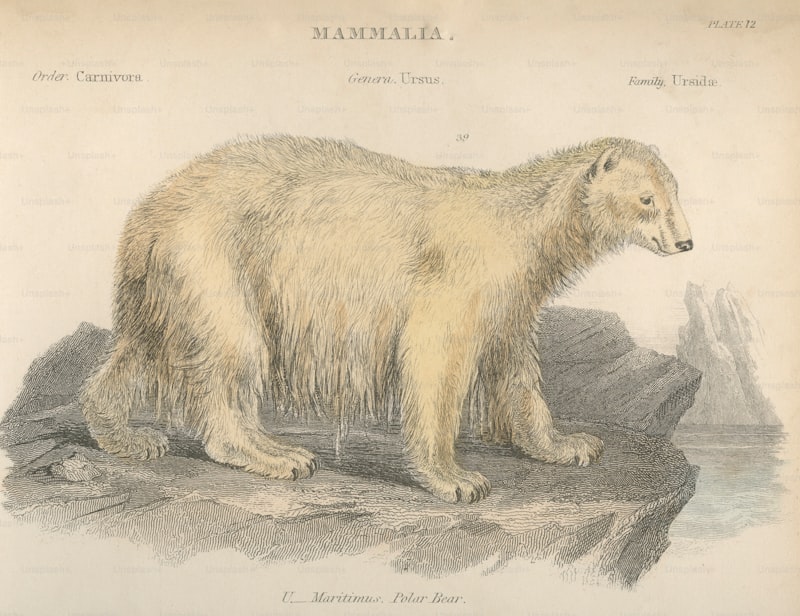One of the most fascinating adaptations is vasoconstriction, where blood vessels near the skin constrict in response to cold. This reduces blood flow to the skin’s surface, minimizing heat loss and keeping vital organs warm. In parallel, muscles can undergo involuntary shivering, generating heat through rapid contractions. This mechanism helps maintain the body’s core temperature, crucial for survival in freezing conditions.
Mammals also deploy a layer of insulating fat under their skin, acting like a natural thermal blanket. This fat layer not only provides insulation but also serves as an energy reserve during times when food is scarce in winter months. Similarly, animals with thick fur or dense coats trap air close to the body, creating an additional barrier against the cold.
Another remarkable adaptation is non-shivering thermogenesis, seen prominently in brown adipose tissue. Unlike shivering, this process produces heat without muscle contractions, relying on specialized mitochondria to burn stored fat directly. This adaptive trait is particularly significant in small mammals and newborns, ensuring they maintain warmth even when external temperatures drop drastically.
Beyond these physical adaptations, mammals exhibit behavioral strategies to cope with cold. Many species, such as hibernators, enter states of torpor where their metabolic rates plummet, conserving energy until conditions improve. This ability to adjust metabolism allows them to survive extended periods without food or water in harsh winter climates.
Surviving Subzero: How Mammals Adapt to Extreme Cold
Ever wondered how animals endure the bitter cold of subzero temperatures? It’s not just about thick fur and huddling together; mammals have evolved fascinating strategies to thrive in some of the coldest places on Earth.

One of the most remarkable adaptations is seen in the Arctic fox. These fluffy creatures don a coat that changes color with the seasons, providing camouflage against snowy backgrounds and protecting them from both predators and extreme weather. In winter, their fur becomes thick and white, blending seamlessly with the snow-covered landscape, while in summer, it turns brown or grey to match the exposed ground.
Polar bears, the giants of the Arctic, have a different approach to staying warm. Their thick layer of blubber acts as a powerful insulator, keeping their body temperature stable even in the freezing waters of the Arctic Ocean. This adaptation not only helps them stay warm but also provides buoyancy when swimming and hunting seals.
Moving to the smaller end of the scale, the Arctic ground squirrel exhibits a behavior known as hibernation. When food becomes scarce and temperatures plummet, these squirrels don’t just tough it out—they enter a state of deep sleep where their body temperature drops close to freezing, allowing them to conserve energy until conditions improve.

In contrast, the musk ox relies on sheer brute force to survive the cold. These sturdy creatures form tight-knit herds, with their thick fur and impressive horns acting as both insulation and protection against predators like wolves and Arctic foxes. By sticking together, they create a microclimate that helps them endure even the harshest winter storms.
But perhaps the most astonishing adaptation belongs to the caribou, also known as reindeer. These majestic animals not only survive but thrive in the Arctic’s extreme cold. Their hooves are specially designed to provide traction on ice and snow, while their noses warm the air before it reaches their lungs, reducing heat loss. It’s no wonder they’re central to the folklore of many Arctic cultures.
Each of these adaptations showcases nature’s ingenuity in the face of adversity. From changing fur colors to hibernation and specialized body structures, mammals have honed their survival skills over millennia. Next time you bundle up against the cold, remember that these creatures have their own incredible ways of thriving in subzero climates.
From Fur to Fat: The Secrets Behind Mammalian Cold Resistance
Let’s dive into the fascinating world of mammalian cold resistance. One of the key players in this survival game is their fur. Imagine it as a cozy blanket that traps heat close to the body. Think of a polar bear’s thick, insulating fur – it’s not just for looking majestic! This fur acts as a shield against the biting Arctic winds, keeping the bear snug and warm even in sub-zero temperatures.
But fur alone isn’t enough. Mammals in harsh climates also stock up on another secret weapon: fat. Yes, that extra layer many of us try to shed in summer is a lifesaver for these animals. Fat serves as a reservoir of energy and insulation. When temperatures plummet, mammals like seals and whales rely on their blubber to stay warm and buoyant in icy waters. It’s like wearing a thermal wetsuit that keeps them from becoming popsicles in the frigid ocean.
Ever wondered why some animals hibernate through winter? It’s another marvel of cold adaptation. Take the chubby groundhog, for instance. Before winter hits, it gorges on food to build up fat reserves. Once temperatures drop, it curls up in its burrow, entering a state of reduced metabolism. This not only conserves energy but also helps it survive until spring returns with its bounty of fresh greens.
So, next time you see a furry critter braving the snow or a blubbery seal diving into icy seas, remember their secret to shrugging off the cold: fur and fat. These adaptations are a testament to nature’s ingenious ways of ensuring survival in the harshest of environments. From Arctic tundras to Antarctic waters, mammals have mastered the art of keeping warm when the world turns frosty.
Evolutionary Marvels: How Mammals Developed Cold Adaptations
In the saga of evolution, mammals stand out as ingenious adapters to diverse environments, showcasing remarkable resilience through the ages. One of the most intriguing chapters in their evolutionary journey is the development of cold adaptations. How did mammals, with their warm-blooded physiology, conquer chilly climates that challenged their survival?
Imagine a time when early mammals roamed the Earth, encountering fluctuating climates and geographic shifts. To thrive in colder environments, they underwent significant physiological transformations. Unlike reptiles that rely on external heat sources, mammals generate their own body heat. This ability provided them with a crucial advantage in adapting to cold climates.
One key adaptation was the evolution of fur and fat. Fur acted as a natural insulator, trapping heat close to the body and shielding mammals from the cold. Over time, species like polar bears and arctic foxes developed thick layers of fat beneath their fur, serving as additional insulation against extreme cold.
Another pivotal adaptation was the adjustment of metabolic rates. Mammals in cold climates developed higher metabolic rates, allowing them to produce more heat internally. This metabolic boost became essential for maintaining body temperature in freezing conditions, enabling survival and reproduction even in the harshest of environments.
Consider the musk ox, a prime example of evolutionary marvel. This large mammal thrives in the Arctic’s icy terrain, thanks to its dense fur and a stocky build that conserves body heat. Musk oxen have adapted to survive temperatures as low as -50°C (-58°F), a testament to the effectiveness of their cold adaptations.
The evolution of cold adaptations among mammals is a testament to nature’s extraordinary creativity. Through the development of fur, fat reserves, and metabolic adjustments, mammals have not only survived but thrived in some of the planet’s most challenging climates. This ongoing adaptation continues to fascinate scientists, offering insights into how life adapts to environmental changes over millennia.
Biochemical Warfare: Mammalian Strategies Against Arctic Chills
Ever wondered how mammals like polar bears and Arctic foxes survive the bone-chilling cold of the Arctic? It’s not just their thick fur coats that keep them warm; these creatures engage in a fascinating biochemical warfare against the freezing temperatures.
In the heart of the Arctic, where temperatures plummet far below freezing, mammals face a constant battle against hypothermia. To combat this, they’ve evolved ingenious strategies. One of the most remarkable adaptations is the production of a specialized protein called antifreeze glycoprotein. This protein circulates in their bloodstream, preventing ice crystals from forming inside their tissues even at sub-zero temperatures. Imagine tiny molecular warriors waging war against frostbite!
But that’s not all. Arctic mammals also have a unique layer of fat beneath their skin called blubber. This blubber acts as a superb insulator, keeping their bodies warm by reducing heat loss to the surrounding icy environment. It’s like wearing a cozy, protective blanket that shields them from the bitter cold.
Their extremities, like ears and tails, are equipped with a clever mechanism that conserves heat. When it gets really cold, blood vessels in these parts constrict, reducing blood flow and minimizing heat loss. This ensures that vital organs stay warm while sacrificing less essential body parts to the Arctic chill.
Next time you see a polar bear effortlessly navigating the frosty terrain, remember it’s not just about brute strength; it’s a testament to millions of years of evolutionary fine-tuning. These Arctic dwellers have mastered the art of biochemical warfare against nature’s coldest climates, proving once again that survival is truly an extraordinary science.
Frequently Asked Questions
What role does fur and insulation play in mammalian cold adaptation?
The role of fur and insulation in mammalian cold adaptation is crucial for maintaining body temperature. Fur acts as a protective layer, trapping air close to the skin to provide insulation against the cold. This adaptation helps mammals retain heat and survive in cold environments by minimizing heat loss through the skin.
How do mammals regulate body temperature in cold climates?
Discover how mammals maintain body warmth in cold climates through various physiological mechanisms such as shivering to generate heat, vasoconstriction to minimize heat loss, and insulation from fur or blubber layers.
How does cold adaptation vary among different mammal species?
This FAQ provides concise insights into how cold adaptation varies across different mammal species. It explores how various evolutionary strategies and physiological adaptations enable mammals to thrive in cold environments, highlighting species-specific traits such as fur density, metabolic rates, and behavioral adaptations.
What are the key adaptations that help mammals survive in extreme cold?
Discover how mammals survive in extreme cold climates through key adaptations such as thick fur or blubber for insulation, specialized blood circulation to conserve heat, and reduced metabolic rates during hibernation.
What physiological changes do mammals undergo to adapt to cold environments?
Learn about the physiological changes mammals undergo to adapt to cold environments, including increased fur density, development of insulating fat layers, and adjustments in metabolic rates to generate more heat. These adaptations help maintain body temperature and ensure survival in harsh cold conditions.


